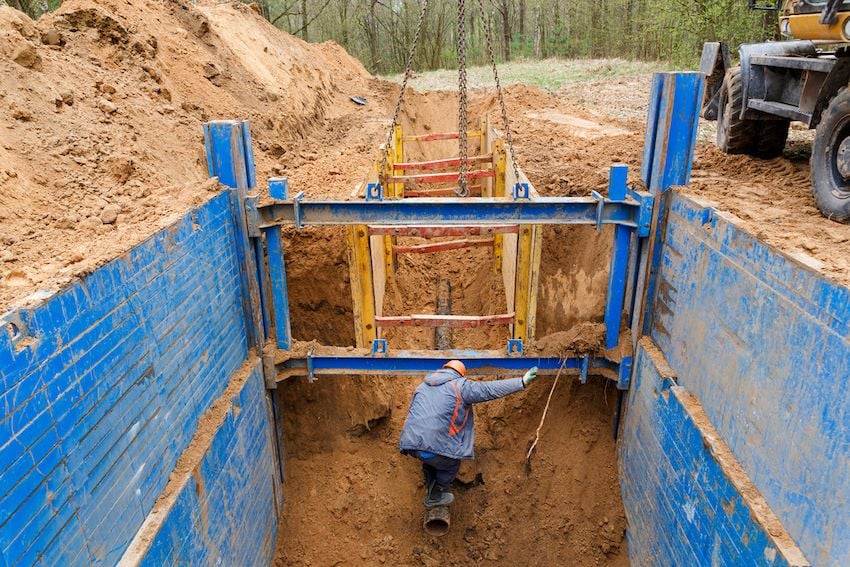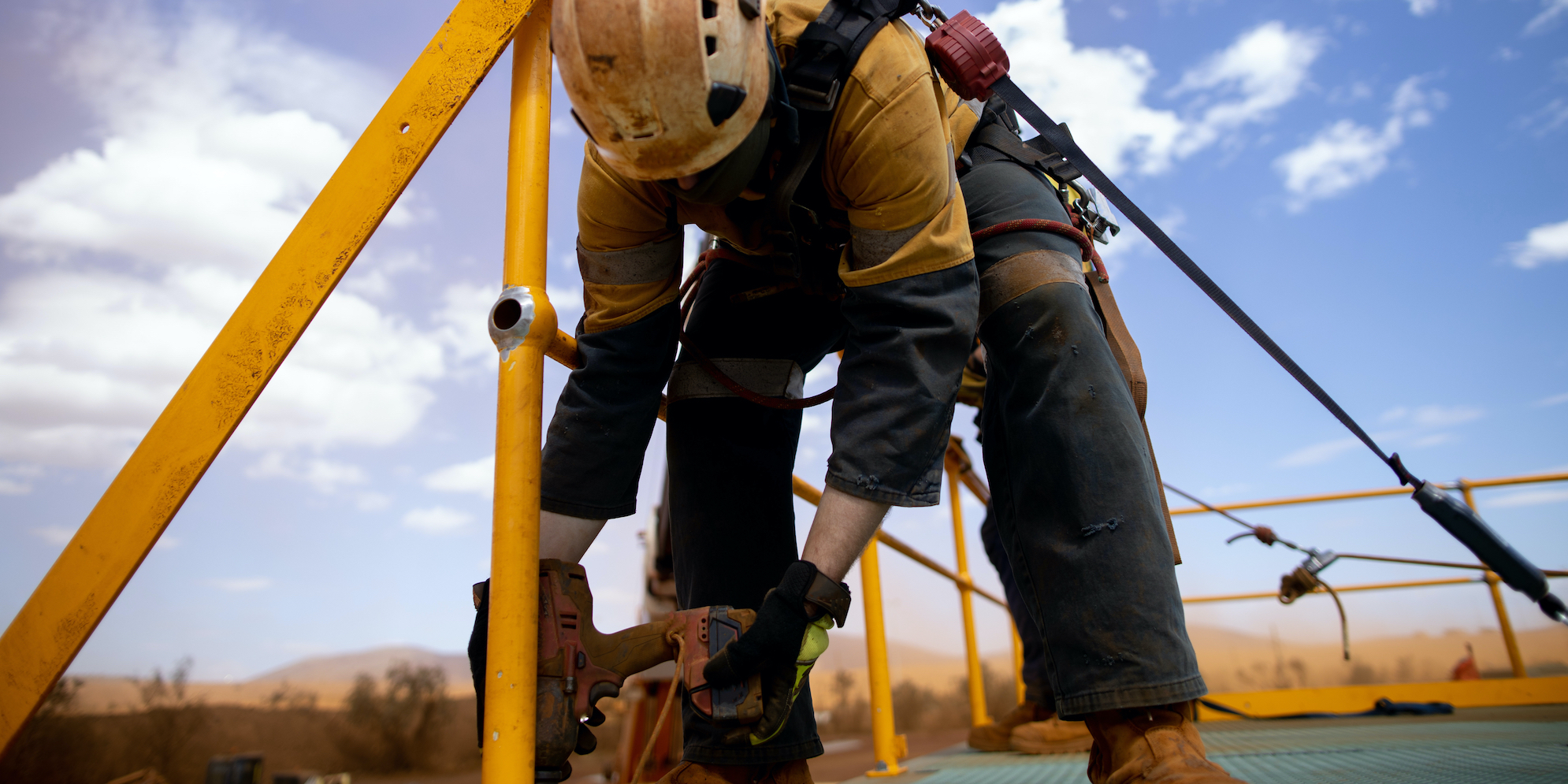In 2020, the construction industry tragically realized 1,008 on-the-job fatalities, according to the Bureau of Labor Statistics (BLS). Although construction hazards will always be present, it’s vital safety leaders, front-line managers, and workers themselves do everything possible to mitigate safety hazards.
Here, we review some of the most common and most deadly jobsite dangers utility construction workers face and how to minimize them.
Mitigating 7 deadly utility construction hazards
1. Falls
Falls are the number one cause of death in the construction industry, according to the U.S. Department of Labor. In 2020, 368 construction workers died from falls, according to the BLS. This represents 37 percent of all construction worker fatalities that year.
Most fall-related injuries are caused by four construction site hazards, according to the Occupational Safety and Health Administration (OSHA). This includes:
- Unprotected sides, wall openings, and floor holes
- Improper scaffold construction
- Unguarded protruding steel rebars
- Misuse of portable ladders
To avoid falls, the Centers for Disease Control and Prevention (CDC) recommends identifying hazards on a construction site before starting work. Additionally, it’s important to provide workers with the right equipment for working at heights and to train them on how to use that equipment properly.
Check out: How to Prevent Injuries and Fatalities from the Top 4 Construction Hazards
2. Violence and other injuries by persons or animals
Sadly, people—whether coworkers, contractors, or passersby—can be a danger to workers. According to the BLS, 55 construction workers were killed by violence and other injuries caused by persons or animals in 2020.
Quite possibly the most heartbreaking of all construction safety hazards, the best way to lower this risk is to create a zero-tolerance policy toward workplace violence, according to OSHA. In addition to having a well-written and sharply implemented workplace violence prevention program, the agency advises employing engineering controls, administrative controls, and providing training for your workers and everyone who comes in contact with them.
3. Respiratory
Working in utility construction can put people at risk for deadly respiratory issues. According to the BLS, 50 people died at work in 2020 due to inhalation of a harmful substance.
When respiratory hazards are present at a jobsite, OSHA requires employers to take several mitigation efforts, including engineering controls—i.e., having an exhaust fan present—work practice controls—i.e., wet-cutting techniques—and administrative controls—i.e., keeping the number of exposed workers to a minimum.
If these methods do not offer proper protection from respiratory hazards, OSHA requires employers to provide workers with respirators. Do note, if this step must be taken, you’ll need to put a respiratory protection program in place.
Also see: 3 Ways to Improve Utility Worker Safety
4. Struck-by
One of the leading construction work hazards, most struck-by accidents happen when people collide with vehicles, falling/flying objects, and while constructing masonry walls. In 2020, 247 workers were killed in a transportation accident—i.e., being struck by a vehicle or incidents of a similar nature—and another 153 died in accidents involving contact with objects and equipment, according to the BLS. The vast majority—75 percent—of struck-by accidents involve heavy equipment, such as trucks or cranes, according to OSHA.
A few key ways workers can avoid struck-by accidents include using designated travel routes, following spotter/flagger signals, and listening for alarms and horns, according to The Center for Construction Research and Training. Machine operators should inspect their vehicle before operating, use mirrors and back-up alarms while driving, restrict areas while backing up, avoid backing out of parking spaces, and turn off their radio when parking, also according to The Center for Construction Research and Training.
Related: 5 Highway Work Zone Safety Best Practices
5. Electrical
Working with electricity can be dangerous, even when risks are known. However, many workers are unaware of the potential electrical hazards in their work environment, increasing their chance of being electrocuted, according to OSHA.
In 2020, 126 workers were killed by exposure to electricity, according to the BLS. OSHA cites the most common causes of electrical injuries as:
- Contact with power lines
- Lack of ground-fault protection
- Path to ground missing or discontinuous
- Equipment not used in the manner prescribed
- Improper use of extension and flexible cords
To prevent electrical incidents, OSHA recommends instilling and enforcing safe work practices. Some examples of this include de-energizing electric equipment before inspection or repair, keeping electric tools properly maintained, exercising caution when working near energized lines, and using appropriate protective equipment.
Read: Protective Measures for Common Electrical Safety Hazards
6. Trenching
An underground utility construction hazard typically caused by a cave-in, trenching was responsible for 1,030 worker deaths from 2011 to 2018, according to OSHA. Thankfully, there are plenty of precautionary measures you can take to decrease the chance of this type of accident happening on a job site.
OSHA recommends conducting a soil analysis before workers enter a trench to determine the best employee protection measures—i.e., sloping, benching, shoring, or shielding. The agency shared five important tips to keep workers safe, including:
- Ensuring there’s a safe entrance and exit
- Ensuring trenches have cave-in protection
- Looking for standing water and testing if atmospheric hazards are—or might be—present
- Keeping materials away from the edge of the trench
- Never entering a trench unless it has been properly inspected by a knowledgeable person
Look: How to Protect Workers From 4 Excavation Safety Hazards
7. Fires and explosions
Though not as common, fires and explosions are just as tragic as the other utility construction hazards discussed here. In 2020, fires and explosions caused the deaths of nine construction workers, according to the BLS.
Training workers to recognize and prevent fires and explosions is the best way to avoid them, according to OSHA. Additionally, qualified managers—or an expertly-trained third party— should conduct a facility analysis before introducing a hazard and to create a hazard prevention and protection program specifically customized to the project.
Hazards are present at every utility jobsite, but being aware of hazards and their controls and providing workers with the proper training and PPE can effectively keep harm at bay.
Up next: Create a Safety-First Culture to Prevent Worker Safety Incidents

